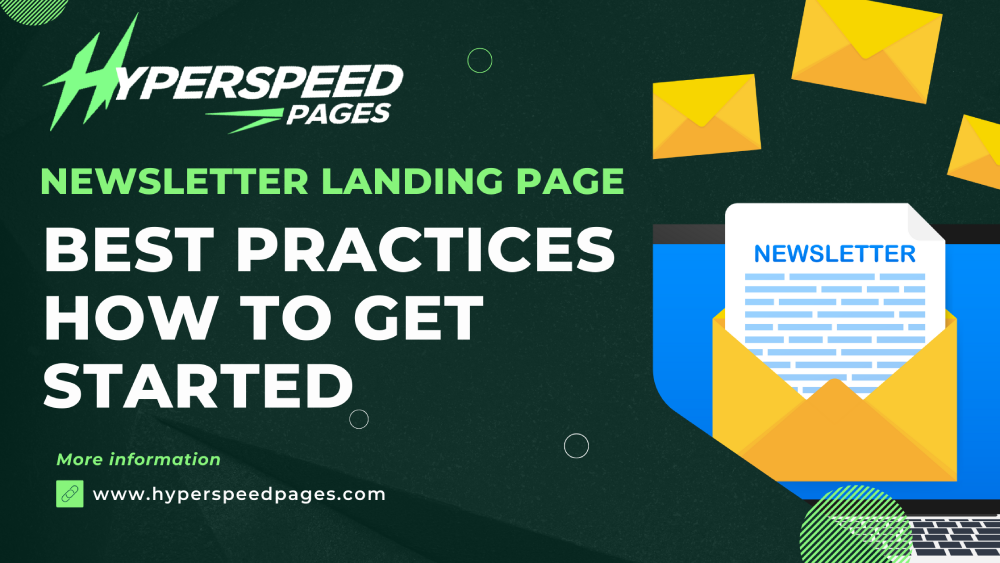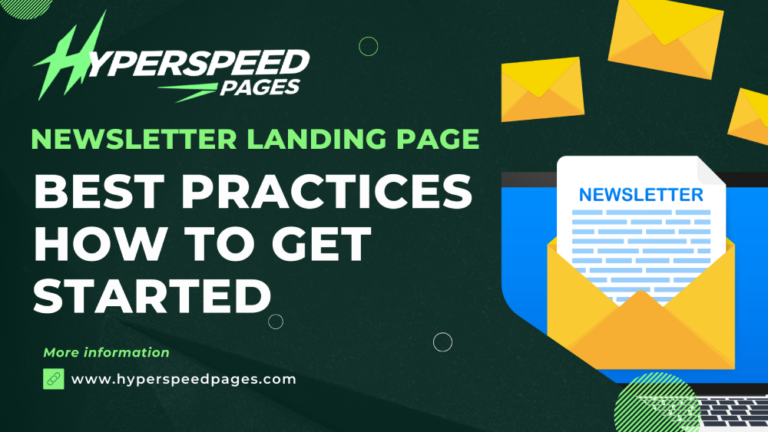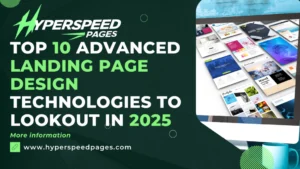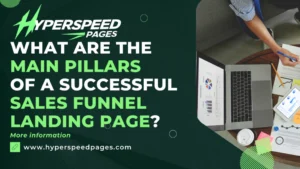
Newsletters remain one of the most effective tools for engaging with your audience, building brand loyalty, and driving conversions. However, the success of a newsletter campaign often hinges on one crucial element: the newsletter landing page. This page serves as the gateway for potential subscribers, and its design, content, and functionality can make or break your efforts.
Key Objectives
Conversion: The primary goal is to convert visitors into subscribers.
Trust-Building: Establish credibility to reassure visitors that subscribing is worth their while.
Value Proposition: Clearly communicate what the subscriber will gain.
1. Essential Elements of a High-Converting Newsletter Landing Page
a) Compelling Headline
- Purpose: The headline is the first thing visitors see. It should immediately capture attention and convey the value of subscribing to your newsletter.
Best Practices
- Keep it clear and concise.
- Focus on the benefit the user will receive.
- Use action-oriented language.
- Example: “Stay Ahead of Industry Trends – Join Our Exclusive Newsletter Today!”
b) Engaging Subheadline
- Purpose: The subheadline supports the main headline by providing additional context or details about the newsletter.
Best Practices
- Address potential pain points.
- Highlight key features or exclusive content.
- Keep it short and direct.
- Example: “Get weekly insights, expert tips, and exclusive offers straight to your inbox.”
c) Value Proposition
- Purpose: The value proposition clearly explains what makes your newsletter valuable and why the visitor should subscribe.
Best Practices
- Use bullet points to list benefits.
- Include specific examples of what the subscriber will receive (e.g., eBooks, case studies, industry reports).
- Align the value proposition with the target audience’s interests and needs.
- Example: “Subscribe now and receive: A free monthly eBook on the latest industry trends, Exclusive access to webinars and Q&A sessions with experts, Weekly tips and strategies to improve your business performance.”
2. Design an Effective Newsletter Landing Page
a) Visual Hierarchy and Layout
Purpose: Visual hierarchy refers to the arrangement and prioritization of elements on your page. It ensures that the most important information catches the visitor’s eye first.
Best Practices
- Use a clean, simple layout that minimizes distractions.
- Place the headline and call-to-action (CTA) above the fold.
- Utilize whitespace to create a sense of balance and focus.
- Technical Consideration: Implement responsive design principles using CSS frameworks like Bootstrap or Flexbox to ensure your layout adapts to various screen sizes and devices.
b) Call-to-Action (CTA)
- Purpose: The CTA is the button or link that prompts the visitor to subscribe. It’s arguably the most critical element on your landing page.
Best Practices
- Use contrasting colors to make the CTA stand out.
- Position the CTA strategically, such as after key information or benefits.
- Use action-oriented language (e.g., “Sign Up Now,” “Join Free”).
- Example: “Subscribe Now” button in a bright, contrasting color like orange or green, positioned immediately after the value proposition.
- Technical Consideration: Use A/B testing tools like Google Optimize to test different CTA placements, colors, and wording to find the most effective combination.
c) Form Design
Purpose: The subscription form is where visitors enter their details to sign up. A well-designed form can significantly boost conversion rates.
Best Practices
- Keep the form fields to a minimum (e.g., name and email address only).
- Use inline validation to provide immediate feedback on form inputs.
- Include privacy assurance (e.g., “We respect your privacy and won’t spam you”).
- Technical Consideration: Utilize JavaScript for form validation and AJAX for form submission to enhance user experience by avoiding page reloads.
d) Visual and Interactive Elements
- Purpose: Visual elements like images, videos, and animations can enhance the appeal of your insurance landing page and provide additional context or information.
Best Practices
- Use high-quality images relevant to your newsletter content.
- Consider including a short explainer video to introduce the newsletter.
- Use animations sparingly to draw attention without overwhelming the user.
- Technical Consideration: Optimize images using formats like WebP for faster loading times and use lazy loading techniques to improve page performance.
3. Trust and Credibility
Establishing trust is crucial for convincing visitors to provide their email addresses. Without trust, even the most well-designed landing page will struggle to convert.
a) Social Proof
- Purpose: Social proof, such as testimonials, subscriber counts, or endorsements, reassures visitors that others find your newsletter valuable.
Best Practices
- Include testimonials from well-known figures or satisfied subscribers.
- Display subscriber count milestones (e.g., “Join 10,000+ industry professionals”).
- Highlight any media coverage or awards your newsletter has received.
- Technical Consideration: Use structured data (Schema.org) to mark up testimonials and reviews for better search engine visibility.
b) Privacy Assurance
Purpose: With growing concerns over data privacy, it’s essential to reassure visitors that their information will be safe.
Best Practices
- Include a clear privacy statement or link to your privacy policy.
- Avoid overly intrusive or mandatory fields in your subscription form.
- Display trust badges or security certifications (e.g., SSL certificate).
- Technical Consideration: Ensure your landing page is HTTPS-secured to protect user data during form submission.
c) Transparency and Authenticity
- Purpose: Transparency about what subscribers can expect helps build trust and sets clear expectations.
Best Practices
- Clearly state the frequency of your emails (e.g., “Weekly updates every Monday”).
- Provide a sample newsletter or preview of past issues.
- Allow subscribers to customize their preferences (e.g., topics of interest).
- Technical Consideration: Implement preference management using dynamic forms or a user account system where subscribers can update their settings.
4. Technical Optimization for Newsletter Landing Pages
Beyond design and content, the technical performance of your restaurant landing page plays a critical role in user experience and SEO rankings. Ensuring your landing page is optimized for speed, accessibility, and search engines is essential.
a) Page Speed Optimization
- Purpose: Fast-loading pages are crucial for reducing bounce rates and improving user experience.
Best Practices
- Compress images and use modern formats like WebP.
- Minimize HTTP requests by combining CSS and JavaScript files.
- Use browser caching and a content delivery network (CDN) to speed up content delivery.
- Technical Consideration: Use tools like Google PageSpeed Insights or Lighthouse to identify performance bottlenecks and implement recommended optimizations.
b) SEO Best Practices
Purpose: Optimizing your landing page for search engines increases its visibility and drives organic traffic.
Best Practices
- Use relevant keywords in your headline, subheadline, and body text.
- Optimize meta tags, including title tags, meta descriptions, and alt text for images.
- Ensure your page is mobile-friendly and passes Google’s Mobile-Friendly Test.
- Technical Consideration: Implement schema markup for enhanced search results, such as rich snippets, which can improve click-through rates.
c) Accessibility Compliance
- Purpose: Ensuring your landing page is accessible to all users, including those with disabilities, is not only a legal requirement in many regions but also enhances user experience.
Best Practices
- Use alt text for all images.
- Ensure that the landing page is navigable by keyboard alone.
- Provide sufficient color contrast for text and background elements.
- Technical Consideration: Use tools like WAVE or Axe to test your page’s accessibility and make necessary adjustments.
Your newsletter landing page is an opportunity to connect with your audience, showcase your expertise, and build trust. Keep it focused, user-friendly, and aligned with your brand voice.
RESEARCH SOURCES:




